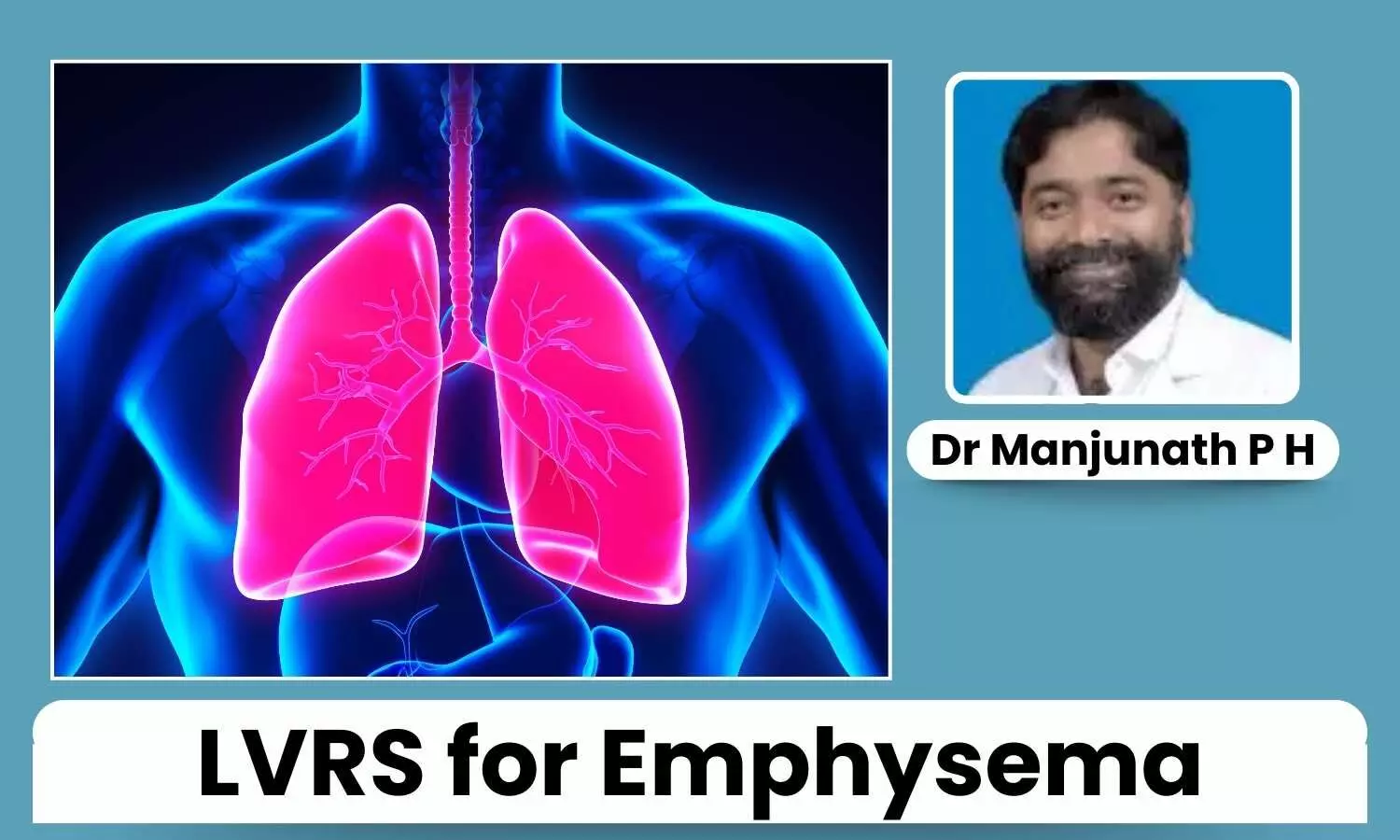Lung Volume Reduction Surgery for Emphysema: Who Benefits, How It Works, and What to Expect - Dr Manjunath P H

Emphysema, a progressive form of chronic obstructivepulmonary disease (COPD), is characterized by the destruction of alveoli, leading to hyperinflation of the lungs and impaired gas exchange.
While standard treatments such as bronchodilators, corticosteroids, pulmonary rehabilitation, and oxygen therapy help manage symptoms, some patients continue to experience debilitating breathlessness.
For such cases, Lung Volume Reduction Surgery (LVRS) offers a promising intervention by removing damaged lung tissue to improve respiratory mechanics. However, like any surgical procedure, LVRS comes with its own set of benefits and risks, necessitating careful patient selection and evaluation.
Understanding Lung Volume Reduction Surgery (LVRS)
LVRS is a surgical procedure aimed at improving lung function by removing the most diseased, non-functional areas of the lungs, typically in the upper lobes.
The objective is to reduce lung hyperinflation, allowing the remaining healthier lung tissue to function more efficiently. The procedure can be performed via a sternotomy (open surgery) or minimally invasive video-assisted thoracoscopic surgery (VATS).
Benefits of LVRS
1. Improved Breathing Efficiency
By removing overinflated and damaged lung tissue, LVRS allows the diaphragm to move more freely, leading to improved respiratory mechanics. This enhances gas exchange, reducing breathlessness and improving oxygenation.
2. Enhanced Exercise Tolerance and Quality of Life
Patients who undergo LVRS often experience increased physical endurance. Studies have shown that patients report a significant reduction in dyspnea (shortness of breath), leading to better participation in daily activities and an overall improved quality of life.
3. Reduced Lung Hyperinflation
In emphysema, the destruction of alveoli leads to air trapping and hyperinflation, which increases the work of breathing. LVRS reduces lung volume, alleviating hyperinflation and reducing the patient’s effort to breathe.
4. Potential Survival Benefit
The National Emphysema Treatment Trial (NETT) demonstrated that carefully selected patients, particularly those with upper-lobe predominant emphysema and poor exercise tolerance, could experience a survival benefit from LVRS compared to standard medical therapy.
Risks and Considerations
1. Surgical Risks
As with any major surgery, LVRS carries risks such as bleeding, infection, and anaesthesia-related complications. Postoperative air leaks are common due to the delicate nature of lung tissue.
2. Risk of Respiratory Failure
Patients with very severe emphysema or poor functional reserve may experience respiratory failure post-surgery. Thus, preoperative pulmonary function tests and cardiopulmonary assessments are critical in determining candidacy.
3. Prolonged Recovery Time
Recovery from LVRS can take several months, requiring pulmonary rehabilitation and ongoing medical support. Patients must commit to lifestyle changes, including smoking cessation and pulmonary exercises, for optimal outcomes.
4. Not Suitable for All Patients
LVRS is most beneficial for patients with upper-lobe predominant emphysema and poor exercise tolerance. Those with diffuse emphysema, significant comorbidities, or very low forced expiratory volume in one second (FEV1 <20% of predicted) may not be ideal candidates and could experience worse outcomes.
Patient Selection: Who Benefits the Most?
Ideal candidates for LVRS include:
1. Patients with severe upper-lobe predominant emphysema.
2. Individuals with a FEV1 of 20–45% of predicted and a total lung capacity (TLC) greater than 100%.
3. Patients with significant lung hyperinflation and impaired gas exchange.
4. Those with a body mass index (BMI) within a healthy range and without significant cardiac or other comorbid conditions.
5. Non-smokers or those who have quit smoking for at least six months before surgery.
Alternatives to LVRS
For patients who are not suitable for LVRS, other options include:
1. Endobronchial Lung Volume Reduction (ELVR)
Minimally invasive bronchoscopic procedures using endobronchial valves or coils can reduce lung hyperinflation without the risks of major surgery.
2. Lung Transplantation
In end-stage emphysema cases, lung transplantation remains a viable option, particularly for younger patients with no contraindications.
3. Pulmonary Rehabilitation and Oxygen Therapy
Comprehensive pulmonary rehabilitation programs and supplemental oxygen can improve functional capacity and symptom management in patients who are not candidates for LVRS.
Lung Volume Reduction Surgery remains a viable treatment option for select emphysema patients who continue to experience debilitating symptoms despite optimal medical therapy. While it offers improved breathing capacity, better quality of life, and potential survival benefits, it is not without risks.
A thorough preoperative evaluation is crucial to identify the right candidates who will derive maximum benefit while minimizing complications. In the evolving landscape of COPD treatment, LVRS continues to play a significant role alongside emerging non-surgical interventions, offering hope for patients struggling with severe emphysema.


